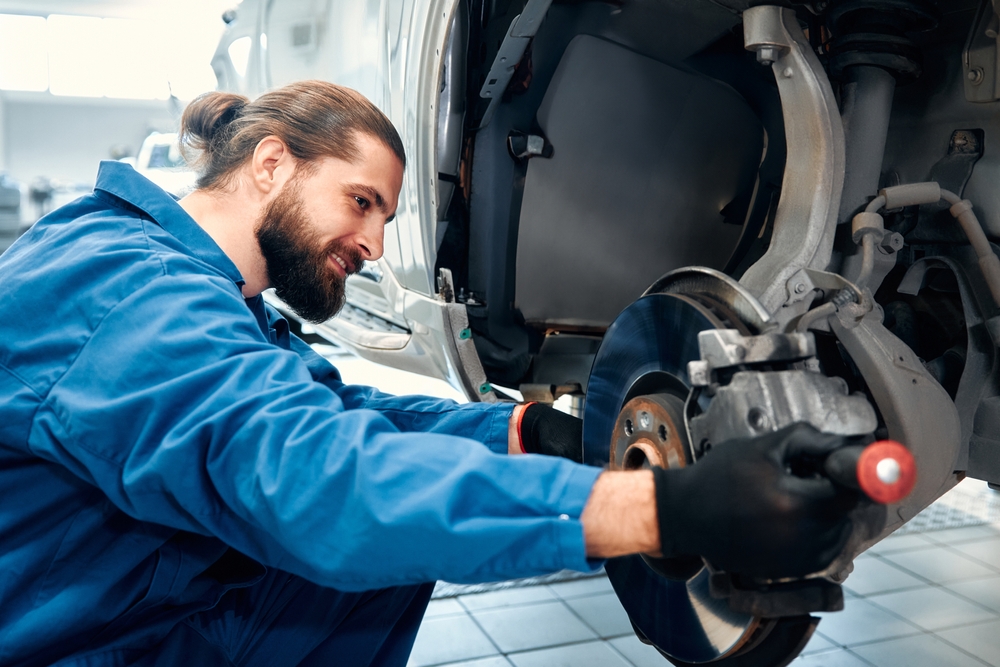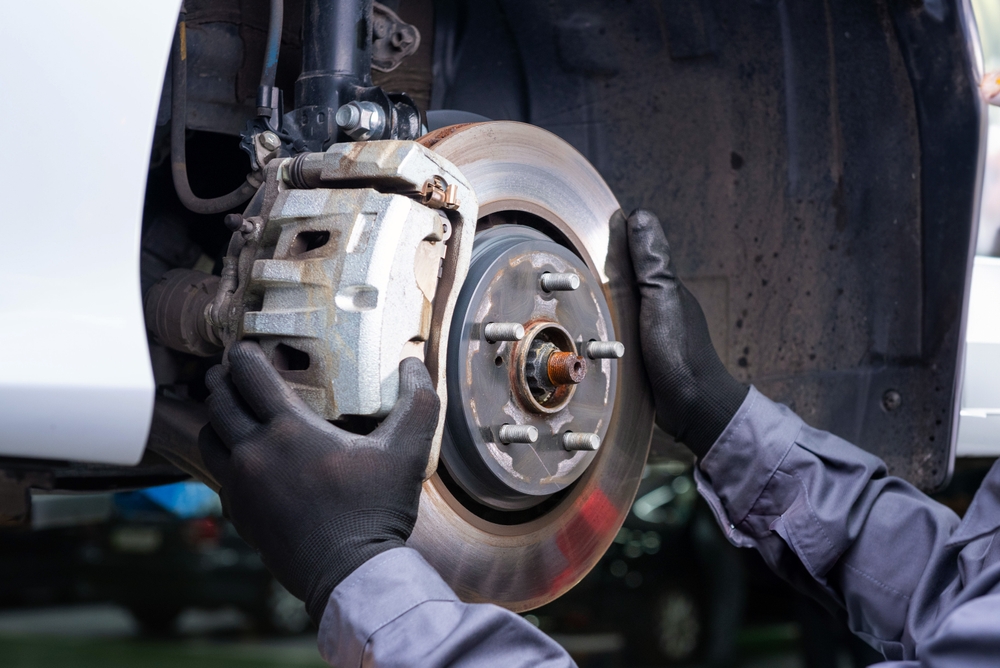
Common Defective Vehicle Parts Causing Accidents
Identifying and Addressing Dangerous Car Components in California
Introduction to Defective Parts
Every day, California drivers trust their vehicles to operate safely. But when a crucial car part fails, the results can be devastating. Defective vehicle parts are a leading cause of accidents across the state, often leaving victims with serious injuries and mounting expenses. If you suspect a faulty part played a role in your crash, you’re not alone. Understanding the most common defective components, your legal rights, and what steps to take next can make a real difference in your recovery and your claim.
In this article, we’ll break down which auto parts most often fail, how these failures impact personal safety, and how California’s product liability laws protect you. If your accident also involved a dangerous drug or a malfunctioning appliance, you may find relevant information on our dangerous drugs or malfunctioning appliances pages.
Top Defective Parts
Some vehicle components fail more frequently or cause greater harm than others. The most common defective vehicle parts linked to California accidents include:
- Airbags that fail to deploy or deploy unexpectedly
- Faulty brakes
- Malfunctioning tires (blowouts, tread separation)
- Defective ignition switches
- Fuel system failures
- Steering system defects
- Seat belt malfunctions
- Electrical system faults
- Headlight and taillight failures
- Accelerator pedal defects
- Transmission issues
- Door latch failures
These defects can lead to accidents on busy California highways or city streets. For insights into broader product issues, see our product liability overview.
How Defects Cause Accidents
Defective vehicle parts can cause a crash in many ways. Here’s how certain failures play out on the road:
- Brake defects may prevent stopping in time
- Tire blowouts can lead to rollovers or loss of control
- Airbag failures put occupants at risk in even minor collisions
- Steering problems can make it impossible to avoid hazards
- Electrical faults may cut power suddenly
If you’ve experienced a car accident and suspect a faulty part, collecting evidence is crucial for your claim.
Airbag Failures
Airbags are designed to save lives, but when they malfunction, they can do just the opposite. Common airbag-related defects include:
- Non-deployment during collisions
- Sudden deployment without impact
- Inadequate inflation
- Shrapnel or chemical burns from faulty materials
These failures can cause head, neck, and chest injuries. If an airbag didn’t function correctly, review our guide on how to prove a consumer product was defective.
Brake and Tire Issues
Brakes and tires are two of the most critical safety systems on any vehicle. When either is defective:
- Stopping distances increase
- Vehicles may skid or slide unexpectedly
- Blowouts can cause rollovers or multi-car crashes
- Faulty brake pads or lines may lead to total brake loss
For coverage on related injury scenarios, see our article on the top causes of car accidents.
Steering and Suspension Failures
Steering and suspension defects can cause:
- Sudden loss of vehicle control
- Pulling to one side
- Difficulty turning or maintaining a lane
- Increased risk of rollover
California drivers who face these issues should consult with an attorney experienced in defective vehicle parts claims.
Seat Belt and Latch Malfunctions
A seat belt that doesn’t work can turn a survivable crash into a tragedy. Common seat belt defects include:
- Latches that fail during impact
- Belts that unspool or retract improperly
- Anchors that break under stress
Door latch failures can also eject occupants during a crash. Both defects raise serious product liability questions.
Ignition and Electrical Failures
Ignition switch and electrical failures have led to high-profile recalls in California. These issues may cause:
- Engines to shut off unexpectedly
- Power steering and brakes to fail
- Airbags to become disabled
- Increased risk of fire
If your accident involved an electrical issue, you may also want to learn about malfunctioning appliances and their legal implications.
Recognizing a Defective Part
How do you know if a part is defective? Signs may include:
- Regular maintenance but sudden failure
- Recall notices for your vehicle or part
- Unusual noises or warning lights before the accident
- Similar problems reported by other drivers
If you’re unsure, a thorough investigation—sometimes with an expert—can help. Learn about how to identify a dangerous product for more tips.
California Product Liability Laws
California law protects consumers harmed by defective products. You don’t have to prove the manufacturer intended harm—only that the part was defective and led to your injuries. Key points:
- Strict liability applies to manufacturers, distributors, and retailers
- Defects may be in design, manufacturing, or warnings/instructions
- You have two years to file a personal injury claim in most cases
See how California’s product liability rules compare to other states by reading related articles.
What to Do After an Accident
If you suspect a defective part caused your accident:
- Get medical attention right away
- Preserve the vehicle and all parts for inspection
- Document the scene with photos and notes
- Collect recall notices or repair receipts
- Contact an attorney before repairing or disposing of your car
For step-by-step advice, our article on how to pursue a defective vehicle part claim offers guidance.
Proving Liability
To win a product liability case in California, you must show:
- The part was defective
- The defect caused your accident or injuries
- You used the vehicle as intended
Expert analysis can be key. For more, read about proving liability in defective vehicle part cases.
Compensation Available
Victims of defective vehicle parts in California may be eligible for:
- Medical expenses (past and future)
- Lost wages and reduced earning ability
- Property damage
- Pain and suffering
Damages depend on the facts of your case. If your injuries overlap with car accidents or premises liability, compensation may cover those areas as well.
Preventing Future Harm
Reporting suspected defects helps protect others. You can:
- File complaints with the National Highway Traffic Safety Administration (NHTSA)
- Respond to manufacturer recalls
- Encourage friends and family to stay vigilant
Staying informed about common failures in consumer products can also reduce risk.
Closing Reassurance
Facing a serious accident caused by a defective vehicle part is overwhelming. You have rights under California law, and skilled legal guidance can help you pursue justice and compensation. If you need support or have questions about your situation, contact us today for a free consultation or call (888) 970-8627. We’re here to support you.
Frequently Asked Questions about Defective Vehicle Parts in California
What are common defective vehicle parts that cause accidents in California? Airbags, brakes, tires, ignition switches, fuel systems, and steering components are among the most common defective vehicle parts linked to California accidents.
How do I know if my accident was caused by a defective vehicle part? Signs include sudden part failure, recall notices for your vehicle, unusual noises before the accident, or reports of similar issues by other drivers. Preserve your vehicle for inspection.
What steps should I take after an accident involving a suspected defective part? Seek medical attention, preserve the vehicle, document everything, gather recall information, and contact an attorney before making repairs or disposing of the car.
Who can be held responsible for a defective vehicle part accident in California? Manufacturers, distributors, and retailers of the defective part may be held strictly liable under California product liability law.
How long do I have to file a claim after an accident caused by a defective vehicle part? In most cases, you have two years from the date of the accident to file a personal injury claim in California.
Disclaimer: This is an advertisement. The information provided is for general purposes only and is not legal advice. Consult a qualified attorney for your specific case. Attain Law cannot guarantee outcomes, as results vary by situation.
Browse Other Articles for "Defective Vehicle Parts" in California:
Start Your FREE Consultation
Complete the form for a Free Consultation. No upfront fees, swift action, and we’re only paid when we succeed for you.
Why Choose Attain Law?
- No Upfront Costs
- We operate on a contingency fee basis—you pay nothing unless we win your case.
- Personalized Attention
- Every case is unique. We tailor our strategies to fit your specific situation.
- Proven Track Record
- Our firm has successfully recovered millions for our clients.
- Statewide Representation
- Based in Woodland Hills, we serve clients throughout California.
Justice Is One Step Away
Ready to turn your struggle into strength? At Attain Law, we’re here to take on your fight—whether it’s a car accident, a dangerous drug, or a workplace injury gone wrong. One call starts it all, and we’re with you every step, no upfront cost required.
- Free Case Review
- No Fees Until Victory
- Millions Recovered
- Personal Strategy
- California Coverage
- Relentless Case Pursuit

